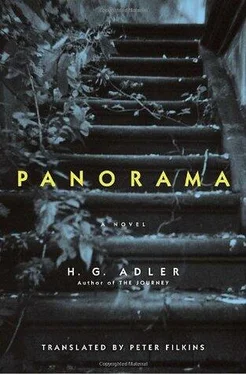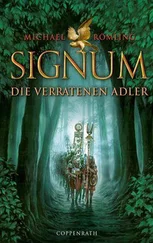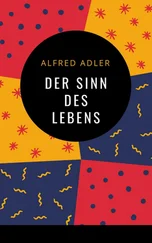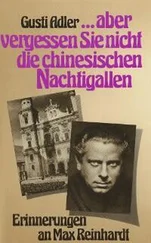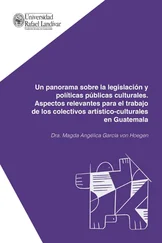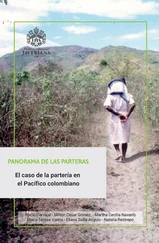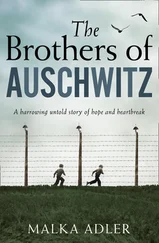Two things stand out here. The first is the way in which Adler’s prose surreptitiously elicits how Josef’s thinking meanders from thoughts about getting the cattle out of the shed, to the stick that he uses, to Fritz’s talent for carving such sticks, to the dangers of cutting himself while carving, and, finally, to the importance of tending to such a wound in order to avoid infection and death. In a single stream of thought, then, we move from the child’s excitement over his bucolic adventures to the ultimate undermining of such euphoria, with the threat of death at rest within it. On the one hand, this is a powerful rendering of Josef’s own thought process, its motion and plummet, and the inner world that is quietly demarcated through it. However, the second, perhaps later impression that the reader will take away is the manner in which the arc of Josef’s thought and Adler’s narration anticipates the unknowable arc of Josef’s own future demise. Herma’s apocryphal warning about the farm boy who dies from tetanus because of medical neglect will one day culminate in the sufferings of the inmates at Langenstein, where “the smallest wounds fester straightaway, and everyone has such wounds from his slave labor, the limbs soon swelling, the body becoming discolored, nothing done in the infirmary, for there is no disinfectant, salve, or bandages.” Hence, what is a rural tragedy of ignorance and neglect for the farm boy eventually becomes the calculated abandonment of the inmates once their utility as slave labor expires, Adler’s evocation of the inmates’ suffering only compounding its poignancy when we realize that the conditions that gave rise to it have in some ways been there all along.
Yet, despite the extremity of the suffering that the novel eventually evokes, Adler’s style shares as much with what we think of as the stream-of-consciousness techniques of Joyce and Woolf as it does with the nightmarish atmosphere of Kafka. To the extent that it is an extension of the Bildungsroman tradition, it is essentially in the sense that A Portrait of the Artist as a Young Man is also seen in that light. Here Stephen Dedalus’s journey from boyhood to committed young artist is granted a mirror image in Josef Kramer’s journey toward eventual exile and conflicted freedom. In addition, the detached manner in which the events of Panorama are reported (Josef rarely speaks directly but, instead, spends most of his time listening to others) is reminiscent of the way Woolf’s Mrs. Ramsay or Mrs. Dalloway report on the life they observe around them, while what we note is the shape and motion of each woman’s consciousness as she observes. The result is a kind of engaged detachment, one that asks us as readers to read with each of these narrators as much as we read about them.
In Adler, this detachment has even deeper philosophical and moral implications. From the outset, the conceit of the panorama itself gives rise to the tensions that exist between the viewer and the viewed, between subject and object, and, finally, between present and past. To Josef as a small child, the trip on a streetcar to watch “various pictures from all over the world” pass by him, in the wooden cabinet for which his grandmother has bought two tickets, is a thrilling experience. Once again, though, and as so often occurs throughout the novel, the journey by train silently and menacingly foreshadows later travels by train that Josef cannot foresee. Similarly, the excitement of pressing his nose to a glass pane in trying to enter the world of “Vesuvius, Niagara Falls, the Great Pyramid,” or even the marvelous unfolding of language itself, as Josef spells out the title of the week’s program, “Li-ma, the Cap-i-tal of Pe-ru”—all of this is eventually turned on its head when, at the end of the novel, Josef considers returning to his homeland and the past but realizes that “he does not believe in the possibility of such a return, even though he knows that he can’t abandon it, but a gulf remains between him and the images of the panorama” that now lie in his memory.
All ten chapters of Panorama mention travel by train or streetcar, thus developing the motif introduced in the brief Vorbild , which describes little Josef’s trip to the panorama. Similarly, the Landstein Castle, which Josef so innocently visits as a fifteen-year-old member of a ragtag hiking club, will eventually be echoed by the Langenstein camp, and finally by Launceston Castle in England, erected by William the Conqueror, whose title further resonates with that other notorious “Conqueror” of Bohemia and of Josef’s life. Add to this the way that the “true path” that Josef distrustfully and briefly explores with the New Age guru Johannes Tvrdil (who is modeled on the avant-garde photographer František Drtikol) also returns as the path that he walks along as a forced laborer, or how Tvrdil’s mystical playing of a gong returns as “a gong, not a bell, a piece of iron rail that hangs from a rack that looks like a gallows” in Langenstein, and we begin to see that Panorama is an intricate web of themes and motifs that continually circle back upon one another. Be it apples, soap, bells, William Tell , Goethe, Schiller, or mushrooms, Adler threads a variety of repeated motifs throughout the novel, so that eventually Josef’s life seems more intricately constructed than even he realizes. Such correspondence can be exhilarating for us as readers, once we see the linkages embedded in Josef’s life and experience, but often linkages arise as moments of dark foreboding easily passed over, as when a pupil of Josef’s describes an outing to the countryside and mentions “a glance back at the railroad tracks providing a view of a little town with a church tower and a couple of factory chimneys, smoke rising from them.” But for Josef such repetition and return are constricting, if not chilling, especially when “the web of relations” he finds himself “ensnared in” threatens him with an existence whereby he must live for and with “memories that one can no longer enter.”
Adler, however, is more a stoic than a tragedian. Just as Stephen Dedalus’s heroism involves the arrival at a plane of regard that allows him to “pare his fingernails” before his own artistic creation, Josef’s real battle is to maintain his own humanity in the face of the dehumanizing forces that continue to mount against him. His own “irrepressible vitality” is the best weapon against this, for “even in the grip of seeming doom, his ability to contemplate what he observe[s] spread[s] beyond the searing pain of the sharpest despair.” Although this realization occurs to Josef more after the fact than within the camp itself, his determination not to give in to despair is also what allows him, at thirteen, to survive the grim atmosphere of the pseudo-military school that he attends, where he is slapped down by The Bull, the stern headmaster, for calling another student a “German pig,” but only because he has been called a “Czech pig,” which is of no concern to The Bull at all. As a distraction from this lonely, repressive existence, Josef, ironically, likes to secretly draw maps of railroads running between cities — Adler’s dark foreshadowing once again flowering in the mention of how the “web of railroads grows ever more thick” upon Josef’s hidden paper. Later, this secret will to map and describe drives both Josef and Adler to take notes on the horrors that surround them, the fodder of suffering turned into the fecund resilience of the imaginative act as it is shaped by sign and symbol alike.
When, some fifteen years later, Josef actually finds himself working as a forced laborer on the railroad that in all likelihood will soon carry him to the hell of Langenstein, this resilience is what allows him to acknowledge what a fellow laborer maintains; namely, that one “may indeed be a victim, but he is also a witness, and through that each can — whether through his own disposition or caprice — find a certain freedom, namely the freedom of knowledge or the ability to know.” Soon afterward, when Josef is asked by a friend if he indeed has any hope, Josef is quick to reply, “No, not hope, that’s not what he’d call it, but instead a readiness to accept whatever might happen, it’s probably life itself that we should accept at any moment without fear. Nothing is more destructive than fear, for, senselessly, it leads to the death of meaning and is itself meaningless, fear able to enslave and murder before a death sentence is even lowered upon a man.”
Читать дальше
